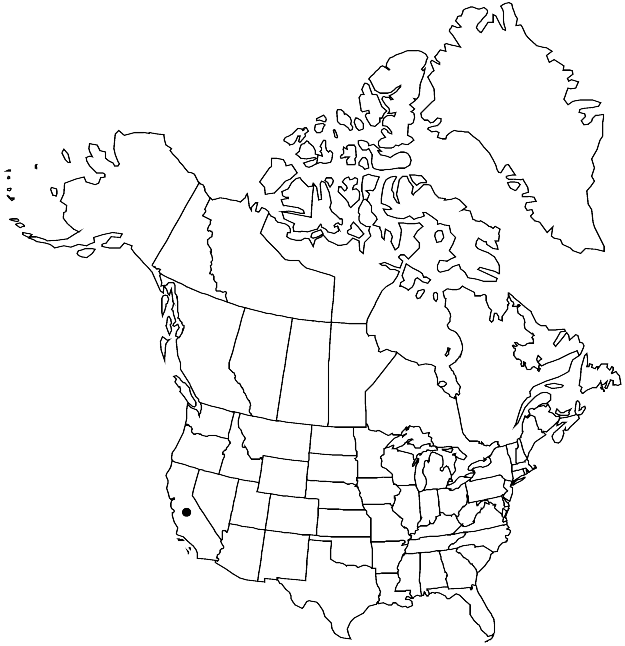Scleropodium julaceum
Bull. Torrey Bot. Club 94: 22, figs. 1 – 7. 1967.
Plants small, in moderately dense mats, green to golden green. Stems 2–5 cm, leafy shoots 0.3–0.4 mm wide, branches strongly julaceous. Stem leaves closely imbricate, erect and slightly spreading when moist, broadly ovate to semiorbicular, 0.7–0.9(–1.2) × 0.5–0.6(–0.7) mm, length to width ratio usually 1.2–1.5:1; margins ± serrulate distally, sometimes almost entire throughout; apex broadly acute or obtuse in smaller leaves; alar cells isodiametric, 9–12 µm, walls moderately thick, region extensive, moderately distinctly delimited; laminal cells 20–60 × 5–9 µm; basal juxtacostal cells quadrate to short-rectangular, 10–15 × 8–10(–12) µm. Seta 0.6–0.7 cm, rough throughout. Capsule horizontal. Spores 12–19 µm.
Habitat: Rock, tree trunks, open and sunny places
Elevation: low to moderate elevations (0-500 m)
Discussion
Scleropodium julaceum occurs only in southern California, with scattered localities north to Mendocino County. This species often has broadly rounded leaves that easily distinguish it from other species in the genus. Small phenotypes of S. cespitans may be similar in appearance and leaf shape, but they differ in their alar cells, numerous and small in S. julaceum, few and enlarged in S. cespitans. Also, the capsule is horizontal in S. julaceum, suberect in S. cespitans. The stems are fragile; the basal juxtacostal cells are in two to five rows; and the laminal cells are rhombic to linear-flexuose.
Selected References
None.
